Tom's Guide Verdict
With its ‘70s sci-fi styling, the Lofree Block looks like it’s come straight from the Nostromo in “Alien”. Offering charming retro looks and sound, plus a comfortable typing experience for long stints of productivity. It isn’t perfect, with subpar battery life and no software for customization, and you can get better value for money elsewhere, but overall this is an incredibly easy board to recommend.
Pros
- +
Awesome retro looks
- +
Decent sound
- +
LED display
- +
Great for typing
- +
Hot swappable
Cons
- -
No remap software
- -
Weak battery
- -
Not cheap
Why you can trust Tom's Guide
The Lofree Block ($169) is a full sized mechanical keyboard from Chinese manufacturer Lofree. Its striking design is intended to conjure nostalgia for the early days of computing and the retro sci-fi flicks of the 70s, while its sound is carefully crafted to remind you of the mechanical keyboards of old.
Despite its classic looks and sound, though, the Block is in every other way a modern productivity board geared specifically towards the typing experience. Its linear TTC switches and a range of internal dampening features ensure a comfortable experience over long stints of work.
If that’s all you’re interested in, it’s a solid purchase, although not flawless. Customization is limited thanks to a single switch choice from Lofree (although the board is hot swappable) and no companion software for remapping and flashing firmware. The 2,000mAh battery is fairly weak, too. While neither of these things should be a dealbreaker, they might be a tricky pill to swallow given the $169 asking price, and the fact that much cheaper rivals like the Keychron V6/Max ($89/$99) offer most of the same benefits without the pitfalls.
So, is this one of the best mechanical keyboards for you? Find out in my full Lofree Block review.
Lofree Block review: Cheat sheet
- What is it? A full size retro-styled mechanical keyboard from Lofree
- Who is it for? Anyone who wants a beautifully styled board and an effortless typing experience
- What else is good? It’s built extremely well and sounds pretty nice too
- What isn’t? It’s $169 at Amazon, which isn’t cheap, the battery is weak and there’s no companion app for customization
Lofree Block review: Specs
| Price | $169 |
| Layout | Full-size, 98-keys |
| Switches | TTC Linear only |
| Hot swappable | Yes |
| Keycaps | Double shot PBT |
| Barebones option | No |
| Stabilizers | Plastic clip-in |
| Mount type | Gasket |
| Case material | ABS plastic |
| Backlighting | White |
| Supported operating systems | macOS, Windows, iOS, iPadOS, Android |
| N-Key Rollover | Yes |
| Pairing channels | 3 (Bluetooth) + 1 (2.4G) + 1 (Wired) |
| Battery | 2,000mAh |
| Battery life (as tested) | ~2.5 days |
| Polling rate | 500Hz |
| Size | 15.2 x 6.5 x 1.6 inches |
| Weight | 2.4 lbs |
Lofree Block review: The ups
The Lofree Block is all about look and feel. Its pared back retro design is gorgeous, while its considered acoustics add to the nostalgic experience. Build quality is decent, while its TTC linear switches make for an easy, comfortable typing experience.
Retro minimalist design
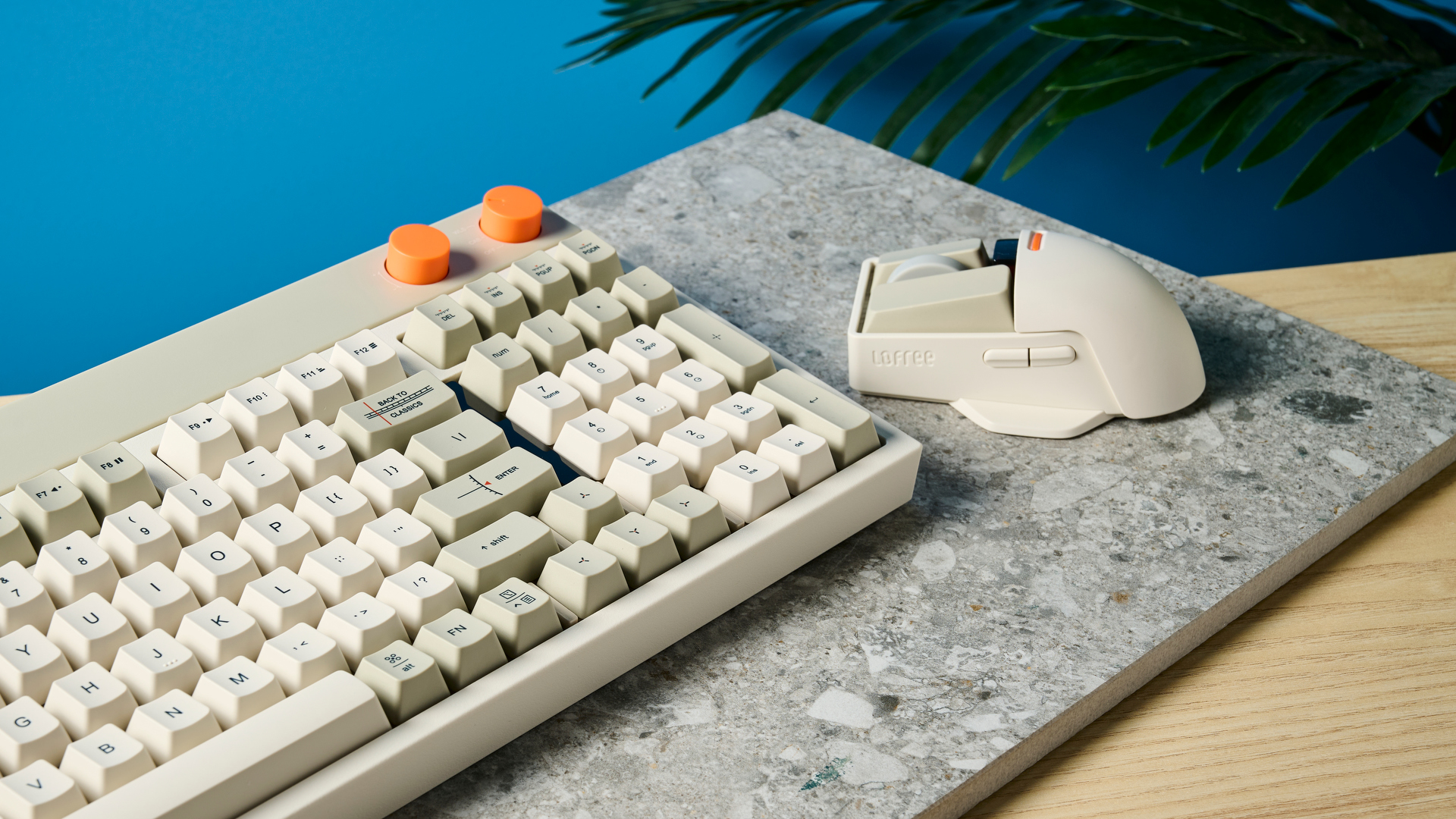
The Lofree Block is beautiful and if you disagree with me we’re on very different pages. With an aesthetic reminiscent of the Mother terminal in Ridley Scott’s Alien, the Block sports an effortlessly retro look, with its yellowed plastic casing and gray squared-off keycaps contrasted by flashes of orange on the top dials and keycap motifs. It’s a similar design philosophy to that utilized by the KSI-Wombat Willow Pro ($144), although the Lofree employs it better in my book.
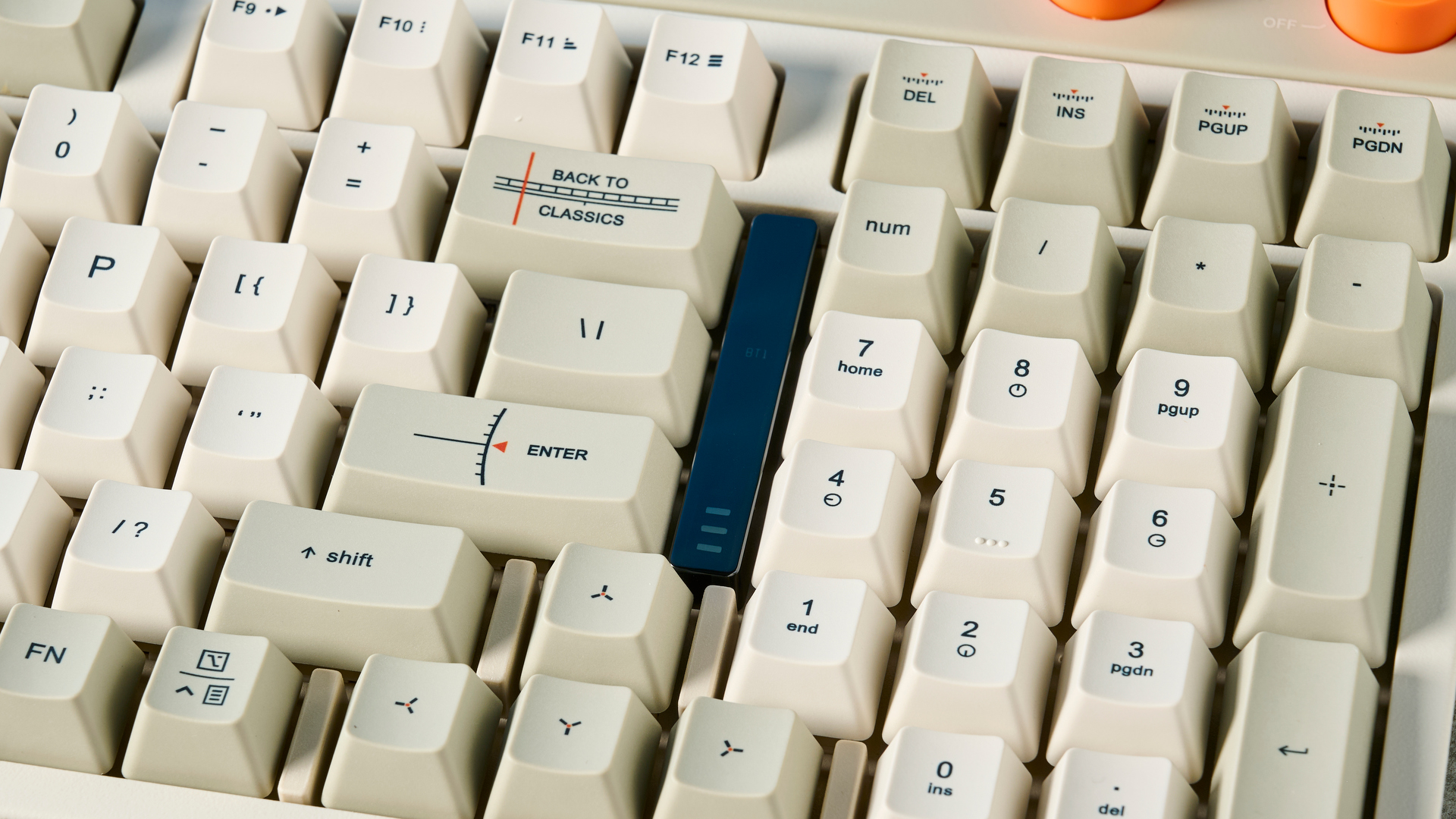
In the center right lies a small LED display, showing connection status and battery levels. This small moment of modernity is at odds with the minimalist nostalgia found everywhere else, but doesn’t feel out of place. Partly that’s to do with the simplistic blocks denoting battery, themselves rather retro, yet it’s also down to the display’s small size and low brightness, which keep it unobtrusive.
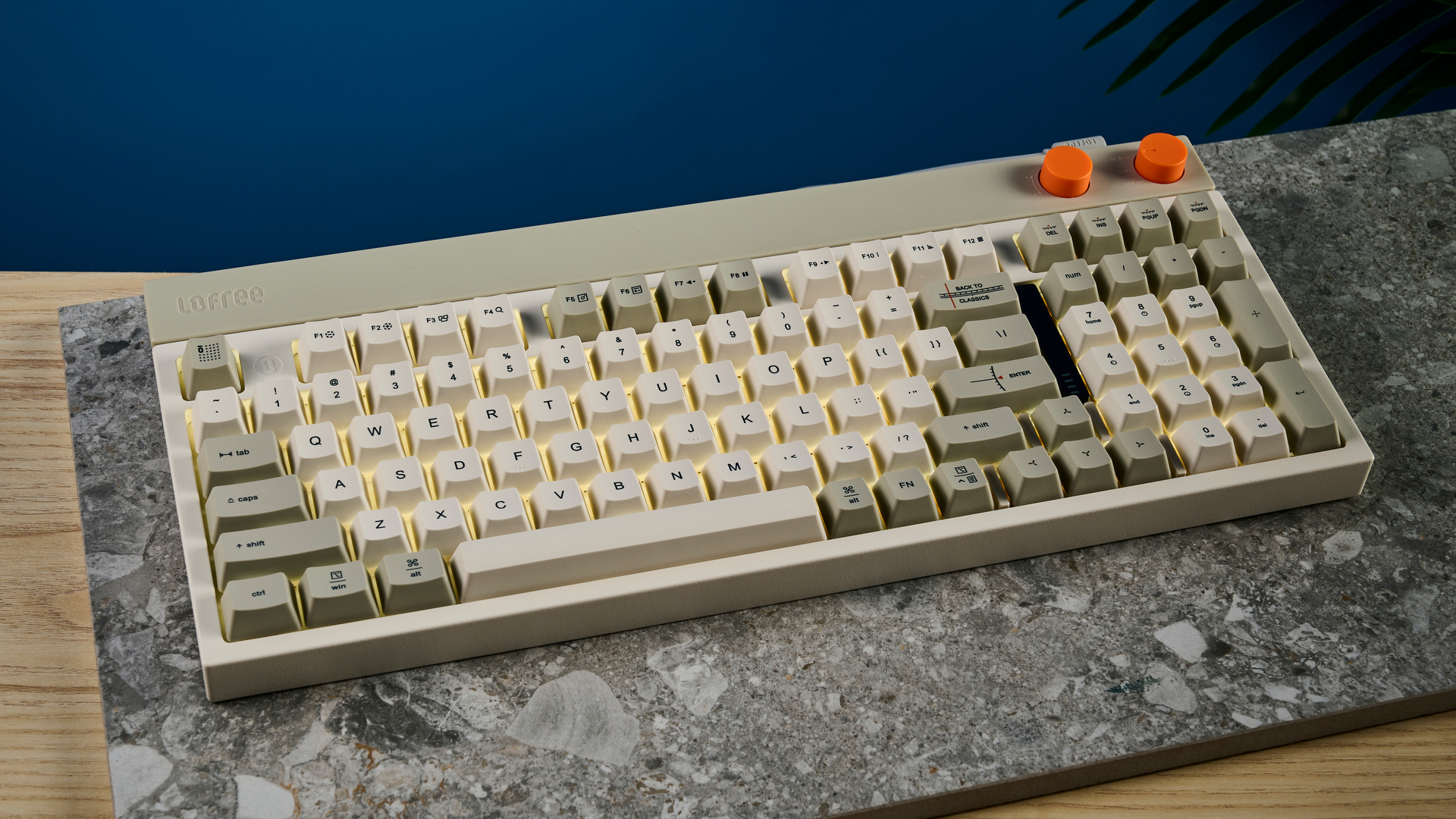
Besides, even if the display stood out more than it does, I wouldn’t care: I’ve relished having a quick view of connectivity status and battery levels (particularly given battery life on this board is so poor — more on that later).
Backlighting is a simple white affair, but that’s fine. Putting RGB on this board would be like coloring in a Canaletto with a highlighter.
Solid build
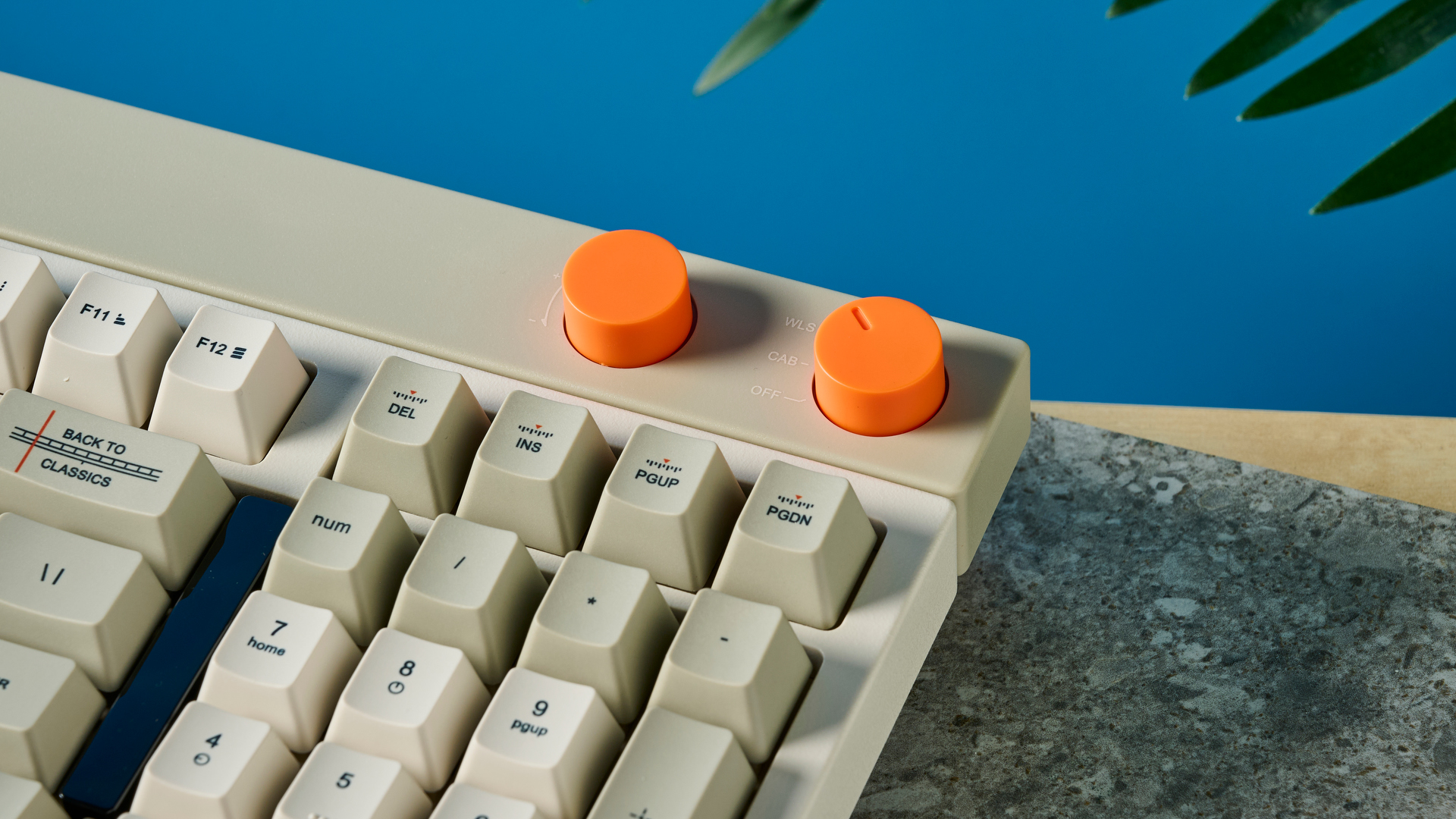
While its plastic case results in a certain amount of lateral flex, the Lofree Block is by no means built badly. Made from ABS plastic, the case itself features a textured finish resembling metal, which feels great to the touch.
Keycaps are double-shot PBT, as you’d expect at this price, with dye-sublimated labels — both factors will resist wear and shine over time. Overall, the board is just extremely well put together: dials clunk well; feet snap into and out of place; there are no rattles to be heard nor untoward movements to be seen under keypresses. We recently tested a Lemokey X3, whose entire plate and PCB assembly visibly bowed under keypresses — you’ll find no such nonsense with the gasket-mounted Block, as should be the case at this price.
Of course, this keyboard isn’t as well built as metal-clad boards like the Keychron Q6 ($195) and Keychron Q3 Max ($215), but nor does it cost or weigh as much.
Sound
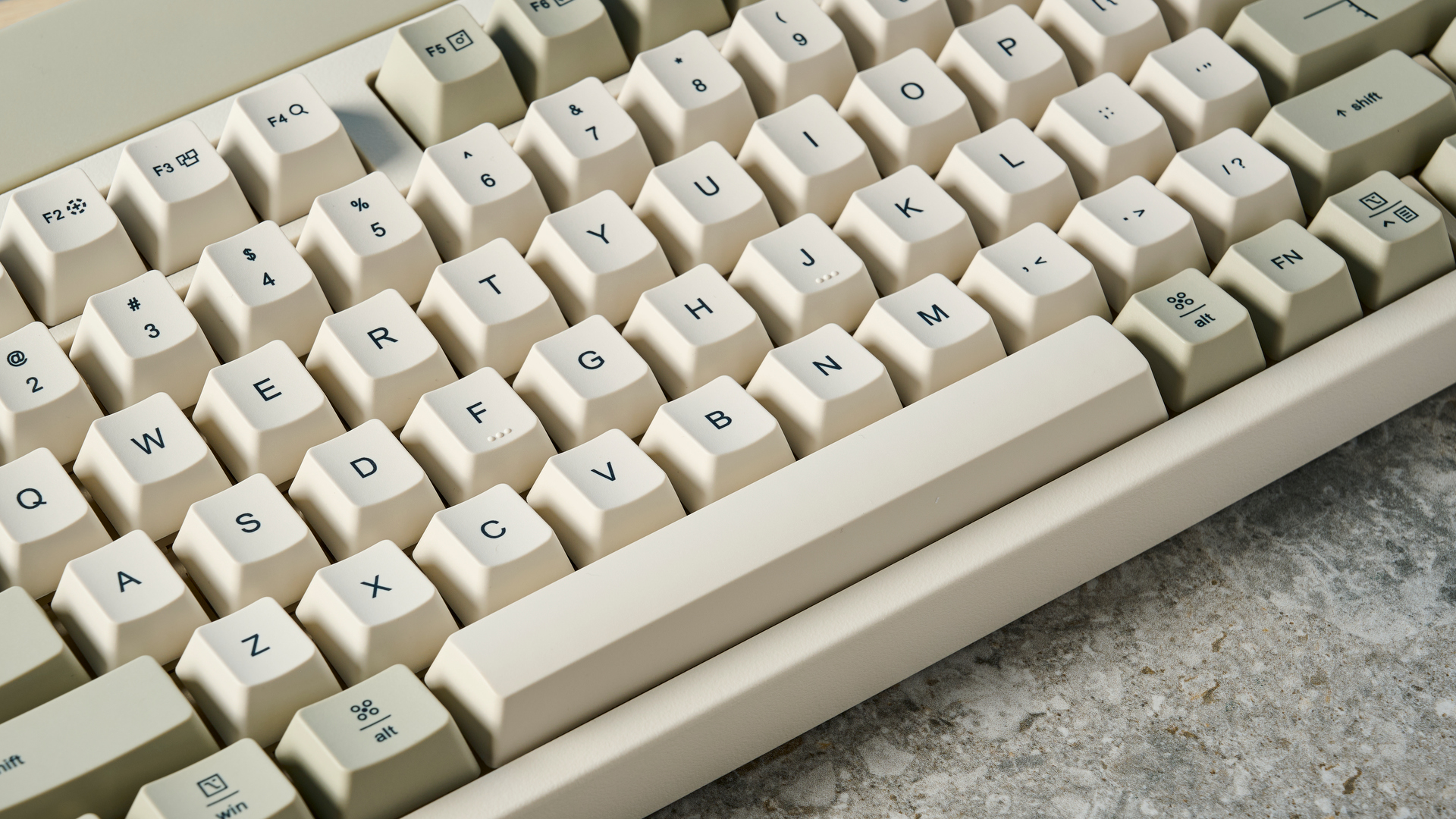
Opening the Lofree Block’s case, you’ll find three layers of internal acoustic dampening surrounding the PCB: two layers of foam above it and a layer of Poron impact-resistant polyurethane underneath. This results in a louder, more hollow sound than boards with more layers of insulation.
This isn’t a bad thing, though. The fewer layers of insulation represent a considered approach to lend the Block the classic sound Lofree was after. More insulation would result in a more contemporary sound — the NuPhy Halo75 V2 ($149), for example, with its 7 layers of silicone and foam, has a supremely damped, quiet sound which, while undeniable lovely and utterly addictive, doesn’t sound like a retro mechanical board of old.
Typing
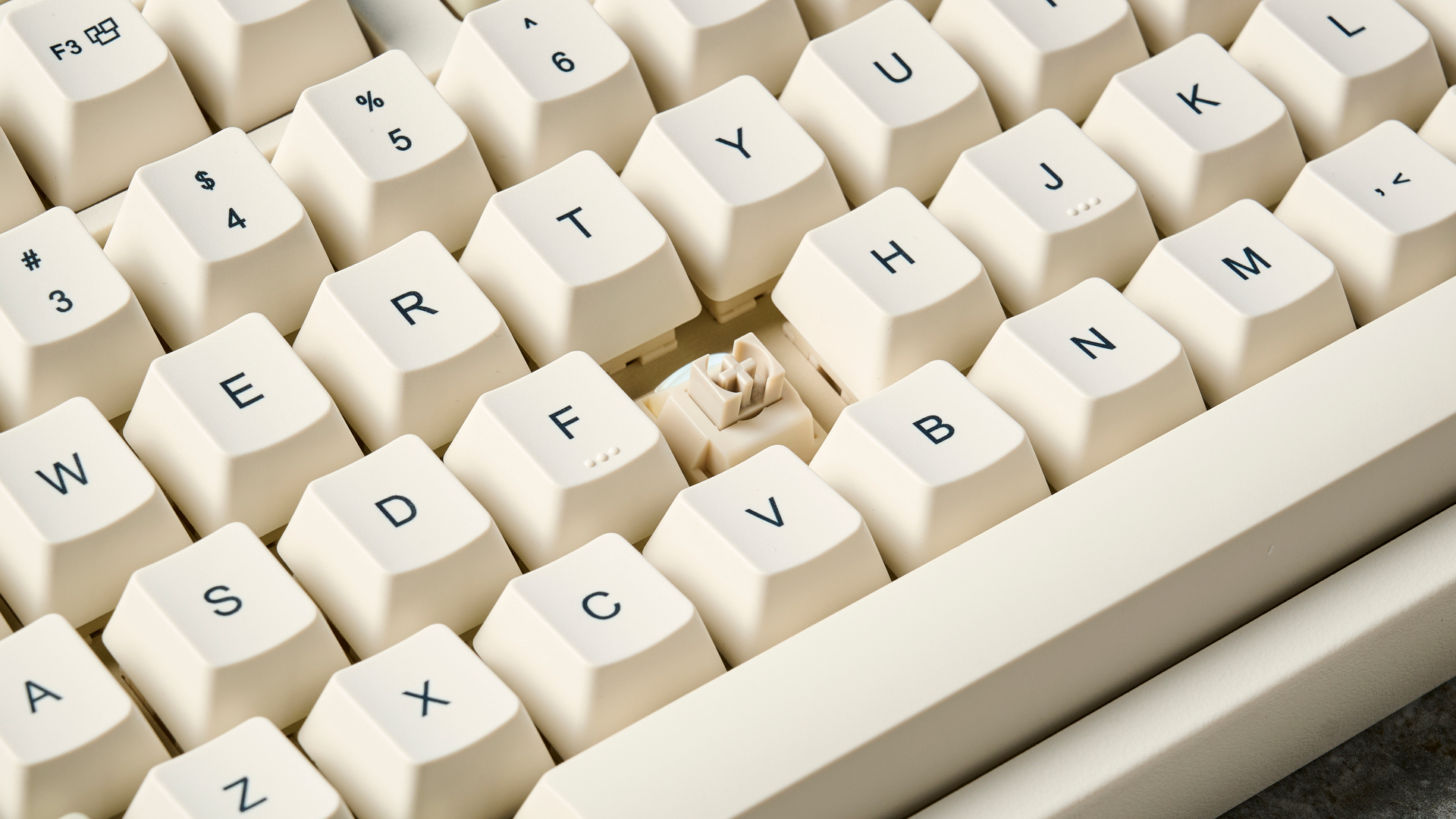
The Block types beautifully, too. Its standard profile PBT keycaps aren’t conducive to the fastest or most accurate typing — I achieved well under my average scores in a type test on 10fastfingers.com, as you can see in the table below.
However, this board is geared more towards comfort and ease of typing. The concave caps are smooth and comfortable under the finger, while the gasket mounting system and high build quality result in a stable typing experience, with little vibration from keystrokes. The TTC linear switches (the only choice available from Lofree) actuate with around 43 grams of force for a light, easy feel under use, yet still feel relatively snappy on the upstroke thanks to a 22mm spring. I found the Block supremely comfortable and easy to use for work, which naturally involves a lot of typing.
| Keyboard | Words per minute (WPM) | Accuracy |
|---|---|---|
| Lofree Block | 84 | 83.00% |
| NuPhy Gem80 | 96 | 92.82% |
| Keychron Q6 | 91 | 90.30% |
| Keychron V6 | 89 | 87.23% |
| Ducky One III TKL | 98 | 92.31% |
| Epomaker TH80 Pro | 88 | 92.44% |
| Logitech MX Keys Mini | 93 | 90.78% |
| Pete's rolling averages (all keyboards) | 90.94 | 88.01% |
If faster and more accurate typing matters most to you, look for a board with low or super-low profile keycaps like the Keychron B1 Pro ($39), Logitech MX Keys Mini ($149) or NuPhy Air75 V2 ($119). Personally, I love NuPhy’s mSA profile, found on the NuPhy Gem80 ($169) and Halo75 V2 ($149), which essentially splits the difference between low and standard profiles, enabling fast and accurate typing with the look and feel or standard profile.
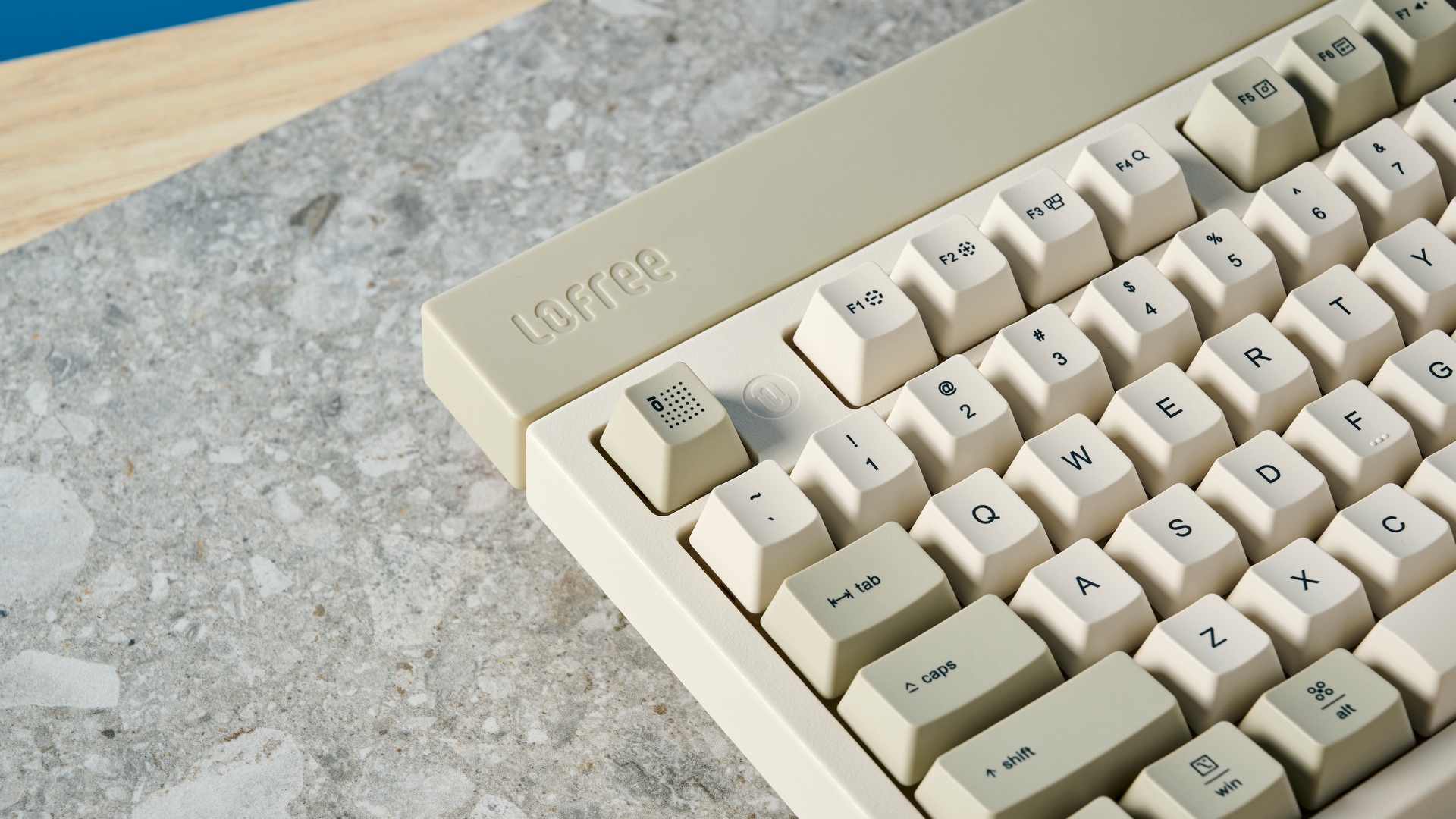
It’s also worth pointing out that the Block utilizes dual-labeled keycaps for Windows and macOS. I use both operating systems on a daily basis, and dual labels completely remove the time I spend scratching my head wondering ‘which key is Alt again?’ when I jump between the two. While I’m happy with productivity boards that pack different OS keycaps separately, it’s so much better to simply print both labels on one set (looking at you, Keychron).
Lofree Block review: The downs
Unfortunately, for all its ups, the Lofree Block has its downs. Customization is limited and, while not extravagantly priced, it ain’t the cheapest, either. Its battery is weak versus other full-size rivals too, although given this is a full-size desk ornament, I can forgive that.
Limited software customization
The Lofree Block offers a degree of customization for those willing to take it apart. It’s hot swappable and can be opened up from the base to facilitate rejigging its internals. However, there’s only a single switch choice from Lofree, which feels a little limiting. What’s more, unlike almost all of its rivals, there’s no companion software to customize the board’s key mappings or create macros.
Not the cheapest option
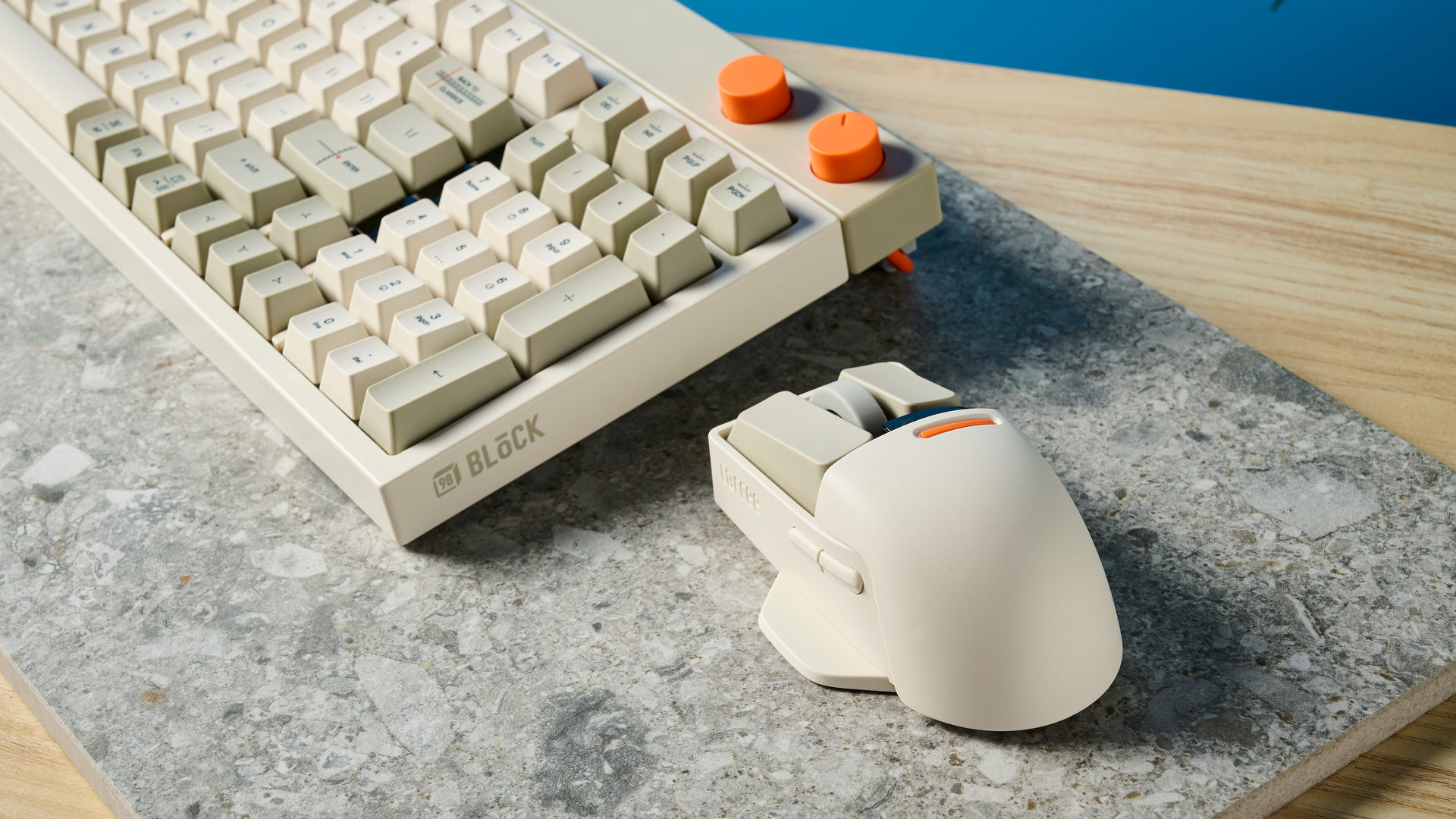
As far as full size mechanical boards go — especially ones that look this good — the Block isn’t unreasonably priced, but nor is it affordable. Its $169 price saves you a noticeable chunk of cash over other full sized productivity boards like the Keychron Q6 ($195).
The metal-clad Q6 could chisel through bedrock, has colored RGB and super-customizable QMK firmware, while the wireless Max variant features a beefier 4,000mAh battery. The Block, though, edges the Q6 in looks, sound and typing, and features adjustable feet, which could save you money on a wrist wrest.
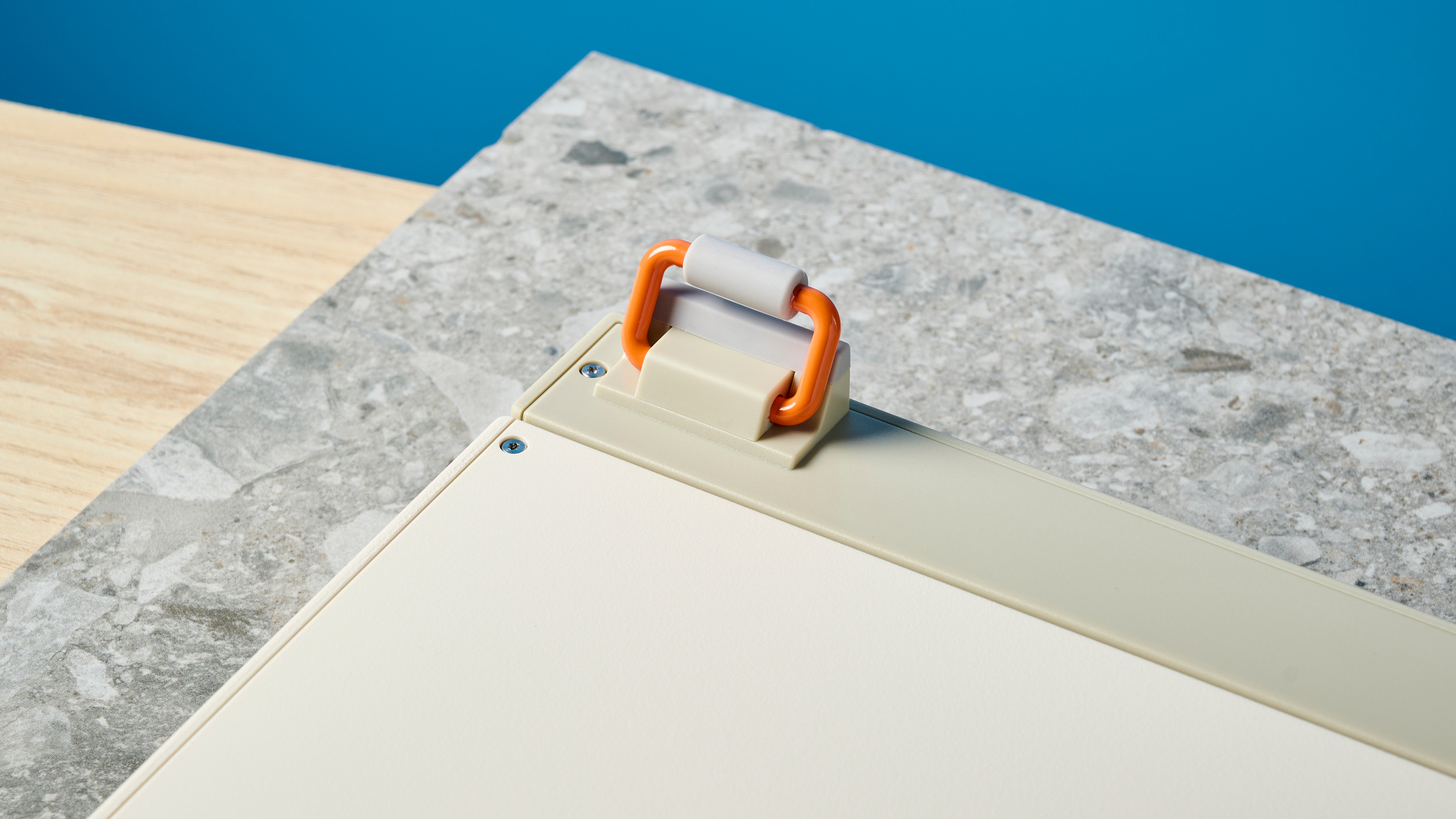
However, it’s where Keychron’s other full-sized board wades in that the waters get muddier. The plastic Keychron V6 ($89) and wireless V6 Max variant ($99) remove much of the weight of the metal Q6 Max and address the latter’s acoustic woes, all the while touting the same customizable firmware, RGB and (in Max guise) 4,000mAh battery. At a cool $70 less than the Block, the V6 Max is where my money would go on a budget.
If you have a bit of extra cash and fancy completing the retro look, you can also purchase the Block in a bundle with the Lofree Touch PBT mouse for $209.
2,000mAh battery
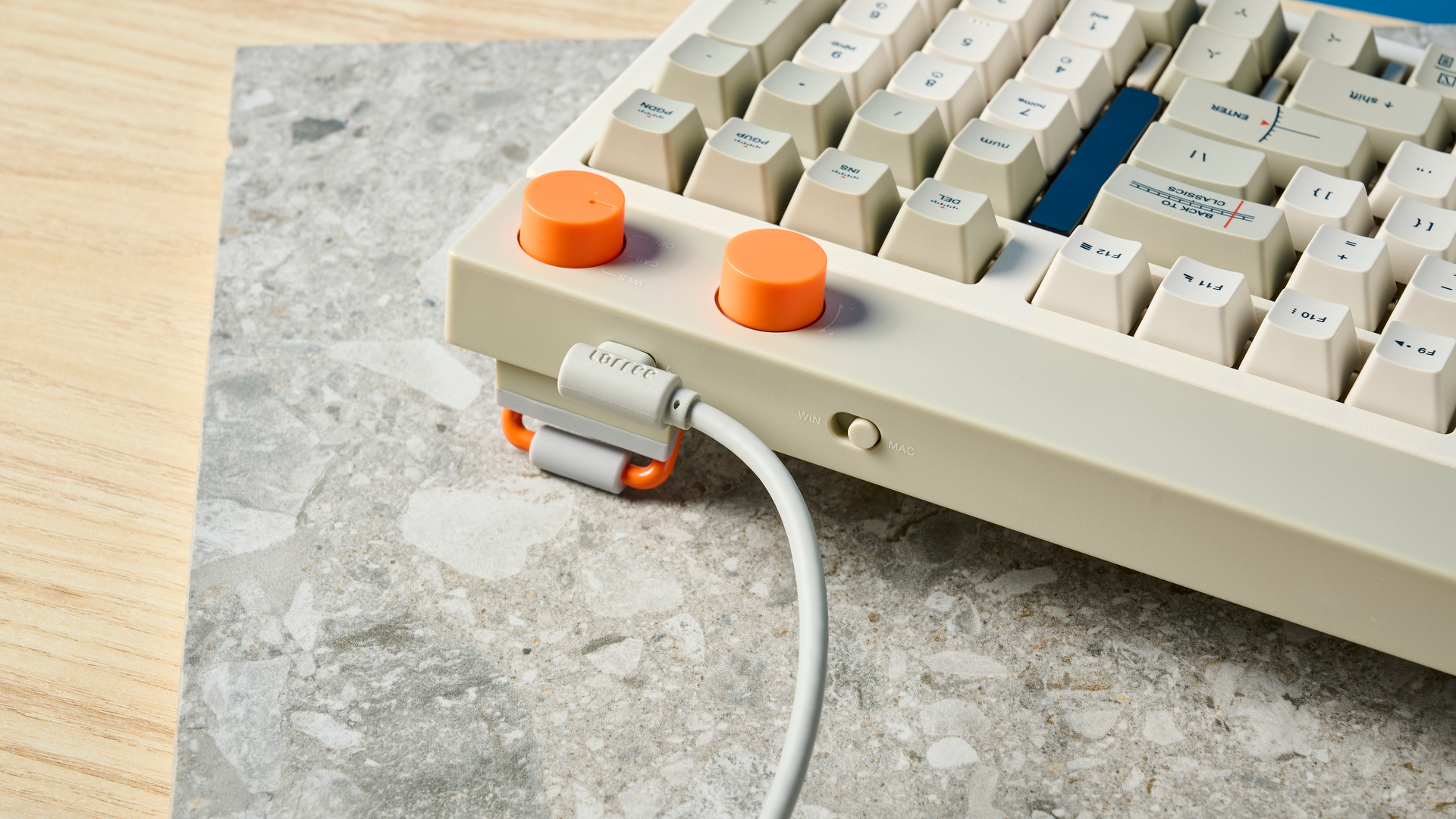
Another notable, although arguably less important qualm I have with the Block is its 2,000mAh battery, which is decidedly subpar versus rivals. From a full charge, using a static backlight as max brightness, I achieved just over two working days before needing to recharge, so around 10-14 hours of continuous use.
This is a frustratingly poor performance in its own right, but especially when compared to, say, the NuPhy Halo75 V2 and Halo96 V2, whose 4,000mAh battery was good for around 90 hours of usage as we tested in the Halo75 V2, with a light display that puts the Block (and, well, every other keyboard ever) to shame.
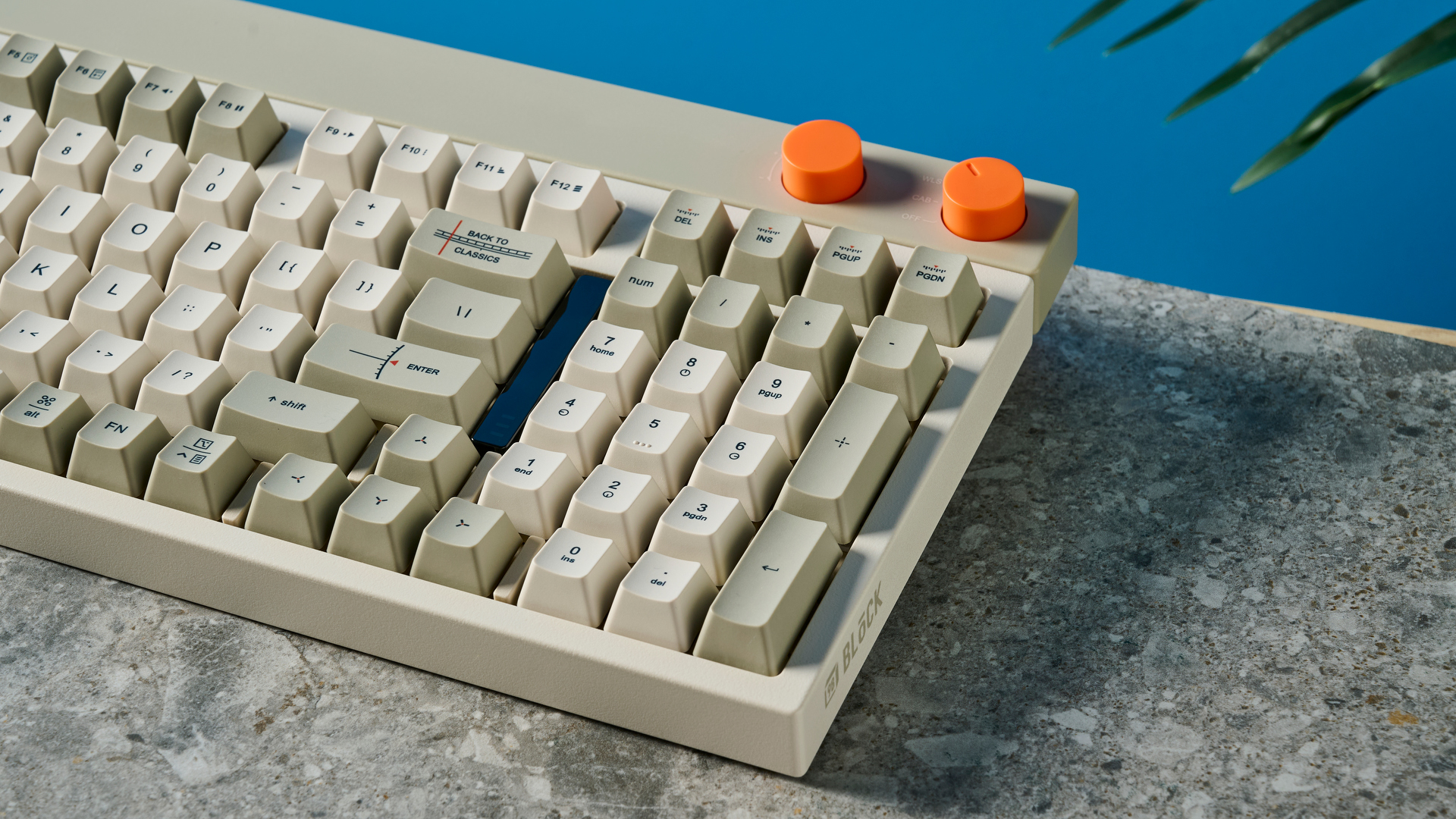
Should this put you off buying the Lofree Block? No. This is a full-sized board designed to take up a permanent position on your desk, where it can be charged as often as you like, or left on a wired connection. If you’re after a board that’ll run and run while on the move, the Block was never the right tool for the job — you’ll want a more portable, lower profile board instead. You might consider the Lofree Flow84 ($159) but that uses the same 2,000mAh battery, so I’d recommend the 4,000mAh NuPhy Air75 V2 ($119), which easily lasted 3-4 weeks (with reactive RGB on) in testing.
Not a gaming board
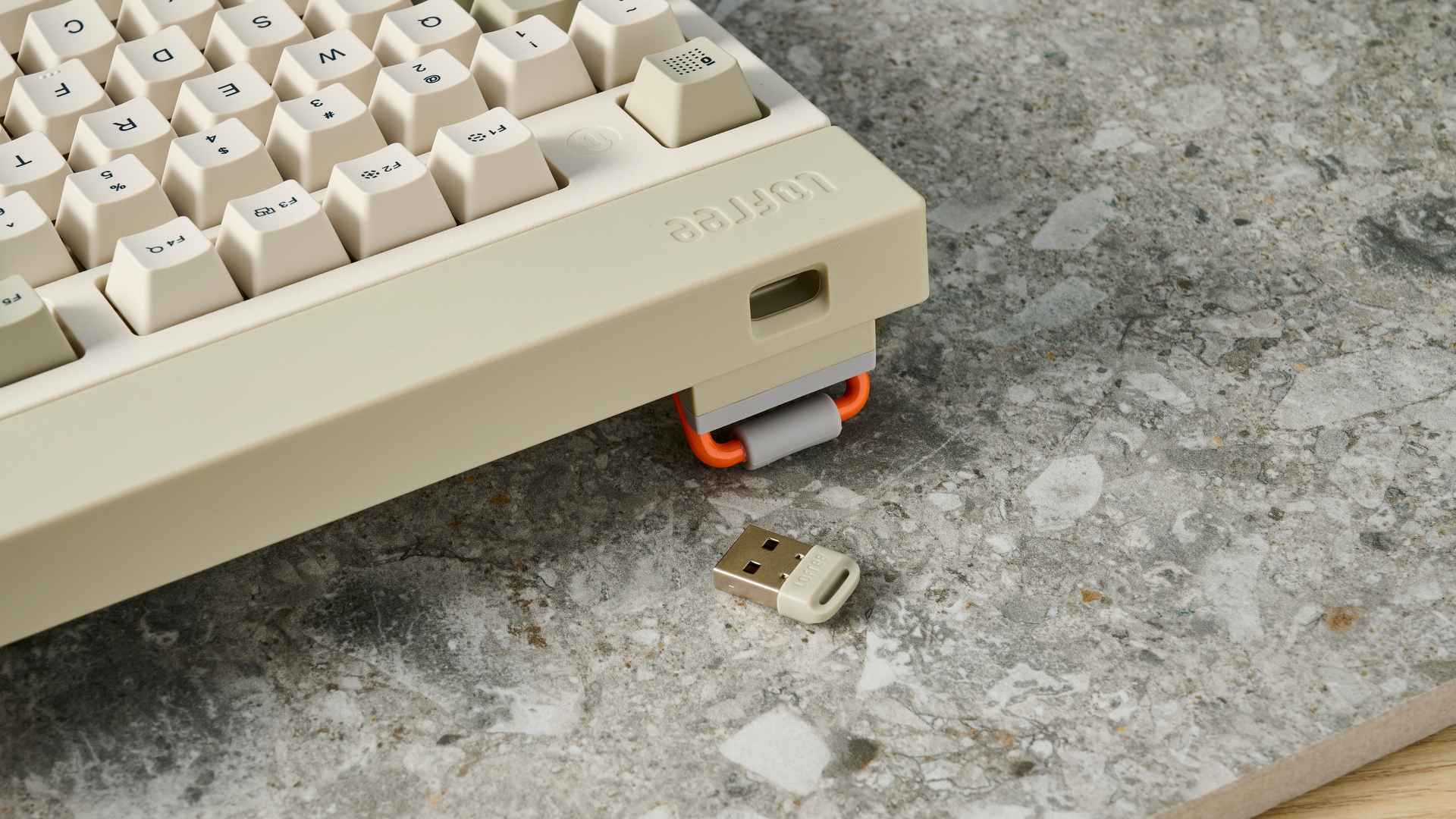
As I’ve mentioned throughout, the Block isn’t a gaming-oriented board, so this isn’t really a con and more a consideration before you buy. Lofree doesn’t mention polling rates for the Block, but in our testing the fastest we measured was 500Hz. This will be enough for casual gaming, but isn't as fast as other rival productivity boards like the Ducky One III TKL ($119) or Epomaker TH80 Pro ($99), which poll at 1,000Hz. If you’re an esports player, you’ll want one of the best gaming keyboards, like the Corsair K70 Max ($230) with its 8,000Hz DPI.
Lofree Block review: Verdict
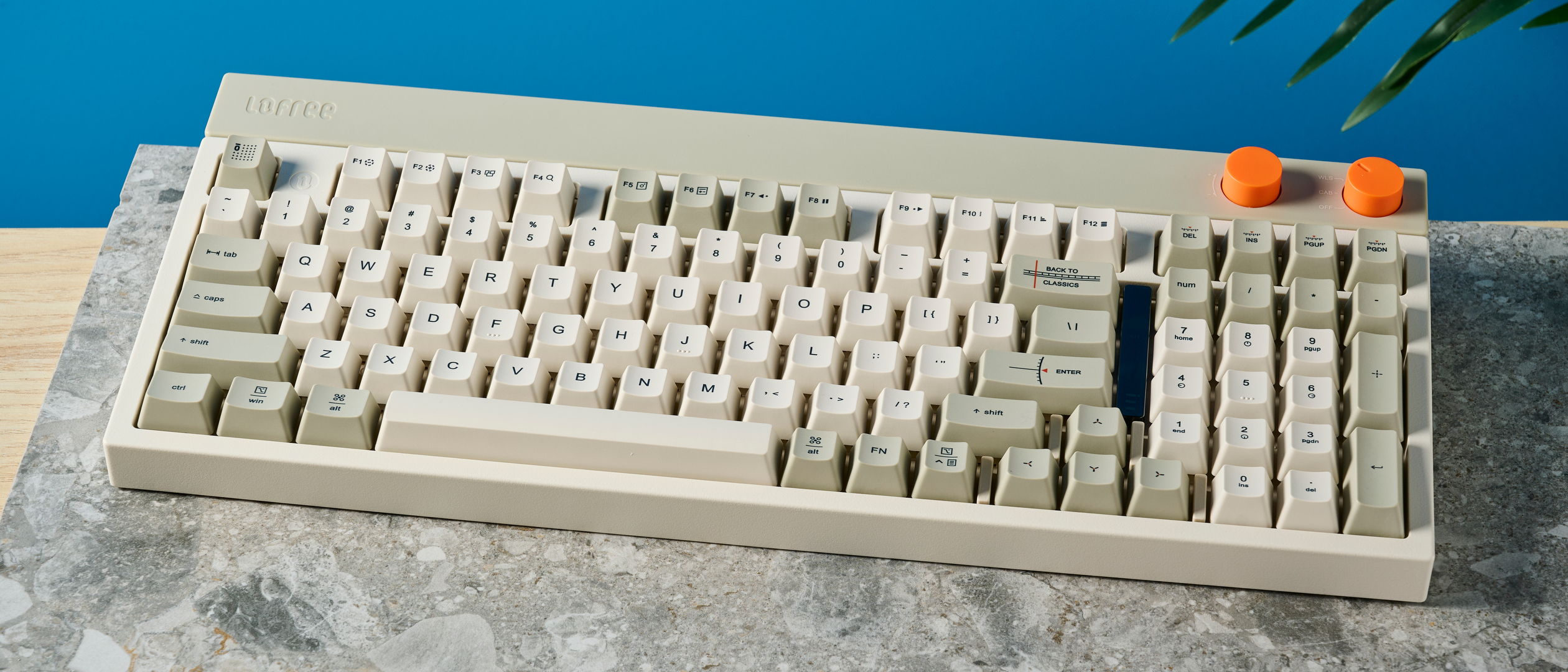
Should you buy the Lofree Block? If what you care about most is a smooth typing experience, with stunning retro looks and a great sound, then yes! This board does exactly what it was designed to do: it’s lovely to type on over long periods of time and adds some sci-fi pizazz to your desk while doing so.
If, however, you want a keyboard for gaming, or one with strong battery life that lets you play about with the firmware, the Block may not be the best purchase for you, especially given that its price of $169 isn’t exactly cheap. With those provisos in mind, the Lofree Block is extremely easy to recommend.

Peter is Reviews Editor at Tom's Guide. As a writer, he covers topics including tech, photography, gaming, hardware, motoring and food & drink. Outside of work, he's an avid photographer, specialising in architectural and portrait photography. When he's not snapping away on his beloved Fujifilm camera, he can usually be found telling everyone about his greyhounds, riding his motorcycle, squeezing as many FPS as possible out of PC games, and perfecting his espresso shots.
